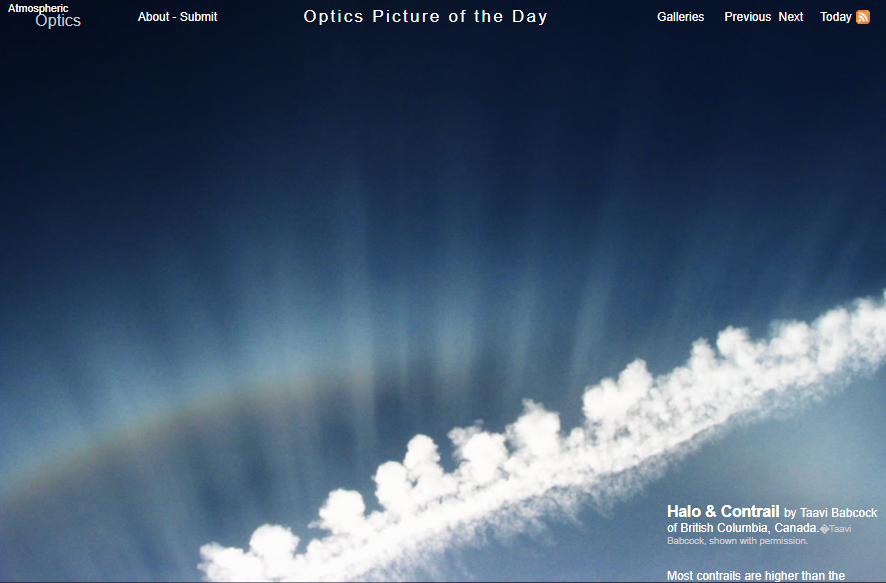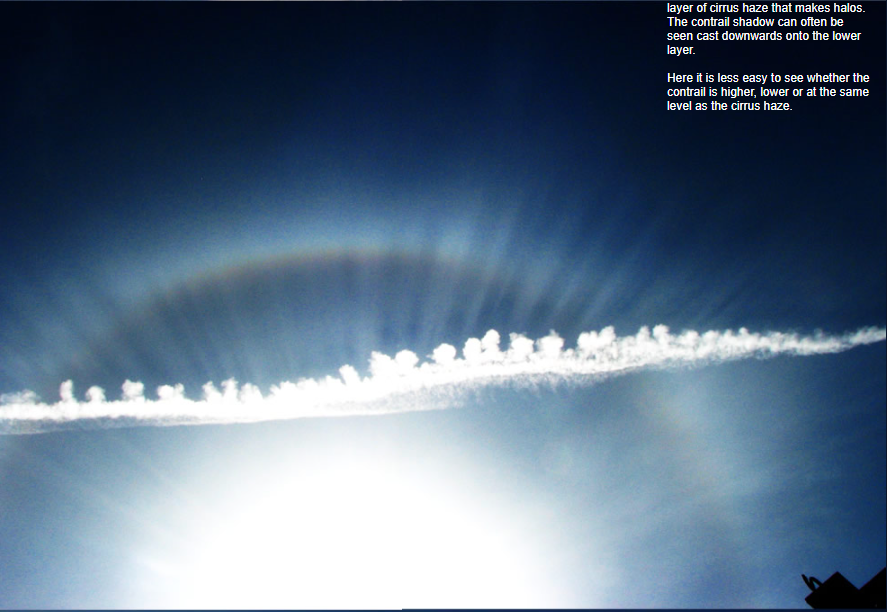Halo & Contrail
Halo & Contrail: Exploring the Phenomenon in the Sky
When gazing up at the sky, we often come across fascinating atmospheric phenomena that leave us in awe. One such captivating sight is the combination of halos and contrails. Halos are optical phenomena caused by the interaction of light with ice crystals in the atmosphere, while contrails are the visible trails left behind by aircraft. Let's delve into the world of halo and contrail formations and explore their intriguing relationship.
Contrails and Their Shadows
Contrails, short for "condensation trails," are formed when hot exhaust gases from aircraft mix with the cold air in the upper atmosphere. The water vapor in the exhaust condenses into ice crystals, creating visible trails behind the aircraft. These trails can persist for several minutes or even hours, depending on atmospheric conditions.
Interestingly, most contrails are often found at altitudes higher than the layer of cirrus haze responsible for halo formation. This disparity in altitude allows for a captivating phenomenon to occur - the shadow of the contrail cast downwards onto the lower layer. This interplay between the contrail and cirrus haze creates a visually striking scene in the sky.
The Enigmatic Relationship Between Contrails and Halos
Determining the relative positions of contrails and cirrus haze can sometimes be challenging. Unlike cases where contrails are clearly above or below the cirrus haze, there are instances where it becomes difficult to discern their respective altitudes. In such situations, we are left wondering whether the contrail is higher, lower, or at the same level as the cirrus haze.
This ambiguity adds an element of intrigue to the atmospheric optics phenomenon. It sparks curiosity and prompts us to observe these interactions more closely, seeking answers to the mysteries hidden within the sky.
The Formation of Halos
Halos, on the other hand, are created by the refraction, reflection, and dispersion of sunlight or moonlight by ice crystals in the atmosphere. These ice crystals, typically found in high-altitude cirrus clouds, scatter the incoming light, resulting in the formation of a halo around the Sun or Moon.
The most common type of halo is the 22-degree halo, which forms a ring around the Sun or Moon with a radius of approximately 22 degrees. This halo is caused by the refraction of light through hexagonal ice crystals, resulting in the separation of the incoming light into its constituent colors.
The Halo-Contrail Combination
When halos and contrails coincide, they create a captivating visual display in the sky. The contrast between the luminous halo and the linear contrail can be a stunning sight to behold. The halo adds an ethereal glow, while the contrail provides a stark and defined element against the backdrop of the sky.
Observing this combination allows us to witness the intricate dance between light and ice crystals in the atmosphere. It serves as a reminder of the wonders that nature and atmospheric conditions can create, leaving us with a sense of wonder and appreciation for the beauty that surrounds us.
Capturing the Halo-Contrail Phenomenon
For those passionate about atmospheric optics and photography, capturing the halo-contrail combination can be an exciting challenge. The unique interplay of light, ice crystals, and aircraft trails provides an opportunity to create stunning visual compositions.
To capture this phenomenon, one must be patient and observant. Keep an eye on the sky, especially when cirrus clouds are present and contrails start to form. Look for opportunities where the contrail intersects with the halo, creating a visually dynamic composition. Experiment with different camera settings and angles to capture the essence of this captivating atmospheric event.
Appreciating Nature's Artistry
The world of atmospheric optics never fails to amaze us with its intricate displays. The combination of halos and contrails is just one example of the beauty that can be found in the sky. As we gaze upwards, let us take a moment to appreciate the natural artistry that unfolds before our eyes.
Whether it's the mesmerizing dance between light and ice crystals or the juxtaposition of contrasting elements, these phenomena remind us of the immense complexity and beauty of our atmosphere. So next time you find yourself outside on a clear day, take a moment to observe the sky and immerse yourself in the wonder of halo and contrail formations.

Halo & Contrail by Taavi Babcock of British Columbia, Canada.�Taavi Babcock, shown with permission.
Most contrails are higher than the layer of cirrus haze that makes halos. The contrail shadow can often be seen cast downwards onto the lower layer.
Here it is less easy to see whether the contrail is higher, lower or at the same level as the cirrus haze.

Note: this article has been automatically converted from the old site and may not appear as intended. You can find the original article here.
Reference Atmospheric Optics
If you use any of the definitions, information, or data presented on Atmospheric Optics, please copy the link or reference below to properly credit us as the reference source. Thank you!
-
<a href="https://atoptics.co.uk/blog/halo-contrail-2/">Halo & Contrail</a>
-
"Halo & Contrail". Atmospheric Optics. Accessed on November 26, 2024. https://atoptics.co.uk/blog/halo-contrail-2/.
-
"Halo & Contrail". Atmospheric Optics, https://atoptics.co.uk/blog/halo-contrail-2/. Accessed 26 November, 2024
-
Halo & Contrail. Atmospheric Optics. Retrieved from https://atoptics.co.uk/blog/halo-contrail-2/.